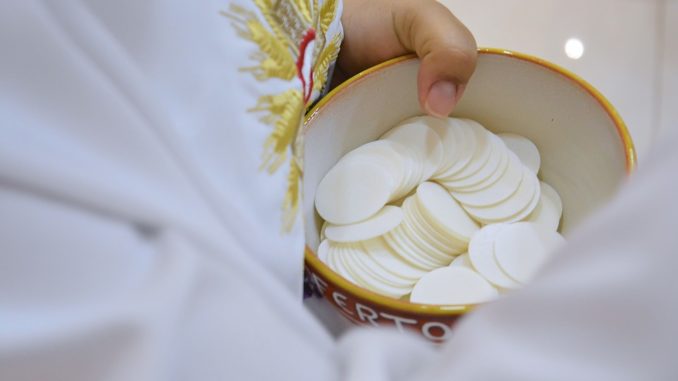Is receiving Communion in hand wrong? Let's be clear
Over the past year and a half, in the context of the COVID-19 pandemic, a controversy has reignited over the receiving Communion in hand.
Although the Communion in the mouth is a gesture of immense reverence and the way that has been established as the norm for receiving the Eucharist, Communion in the hand - far from being a recent novelty - is part of the tradition of the early centuries of the Church.
In addition, Catholics are encouraged to follow the evangelical counsel ofobedience to Christ and to him through the Holy Father and the bishops. Once the episcopate concludes that something is lawful, the faithful must be certain that they are doing the right thing.

In a document published on the Conference of the Mexican Bishops, the late Salesian priest José Aldazabal explains these and other aspects of the Eucharistic liturgy.
During the first centuries of the Church, the Christian community naturally lived the habit of receiving Communion in hand.
The clearest evidence in this regard - in addition to the paintings of the time that represent this practice - is the document of St. Cyril of Jerusalem drawn up in the XNUMXth century which reads:
"When you approach to receive the Body of the Lord, do not approach with the palms of your hands outstretched or with your fingers open, but make your left hand a throne for your right, where the King will sit. With the hollow of your hand you receive the Body of Christ and answer Amen… ”.
Centuries later, starting from the XNUMXth and XNUMXth centuries, the practice of receiving the Eucharist in the mouth began to be established. As early as the XNUMXth century, regional councils had established this gesture as the official way to receive the sacrament.

What reasons were there for changing the practice of receiving Communion on the hand? At least three. On the one hand, the fear of the profanation of the Eucharist, which could thus fall into the hands of someone with a bad soul or who did not care enough for the Body of Christ.
Another reason was that Communion in the mouth was judged to be the practice that most showed respect and veneration for the Eucharist.
Then, in this period of the history of the Church, a new sensitivity arose around the role of ordained ministers, in contrast with the faithful. It has begun to be considered that the only hands that can touch the Eucharist are the priestly ones.
In 1969, the Congregation for Divine Worship instituted the Instruction "Domini Memorial". There the practice of receiving the Eucharist in the mouth as the official one was reaffirmed, but it allowed that in areas where the Episcopate deemed it appropriate with more than two thirds of the votes, it could leave the faithful the freedom to receive Communion in the hand. .
So, with this background and in the face of the emergence of the COVID-19 pandemic, the ecclesiastical authorities have provisionally established the reception of the Eucharist in hand as the only appropriate one in this context.